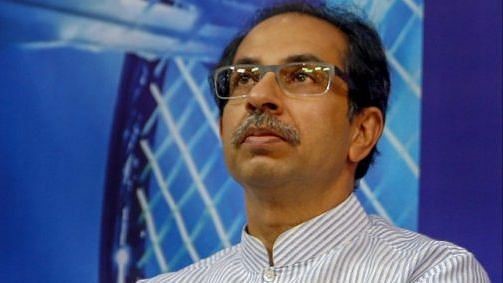
Shiv Sena at crossroads; tough road ahead post-rebellion

The embattled Shiv Sena finds itself at political crossroads once again, after being hit by a rebellion led by Eknath Shinde and the resignation of Chief Minister Uddhav Thackeray. It is the first big challenge for party after the death of founder Balasaheb Thackeray in 2012.
In an emotional address on Wednesday (June 29) night, Uddhav Thackeray announced his resignation as Maharashtra CM and declared that he would meet party workers at the Sena Bhawan, the headquarters of the party in central Mumbai, indicating the tough road ahead to regain the lost ground to the rebellion.
As chief minister, Shinde could also be a magnet that attracts Shiv Sainiks to the new power structure, further weakening the parent outfit.
In its 56-year history, the Shiv Sena has witnessed many a rebellion which saw the exit of party stalwarts such as Chhagan Bhujbal (1991), Narayan Rane (2005) and Raj Thackeray (2006), but none matched the scale of the huge void left by Shinde that has led to the fall of the government led by Uddhav Thackeray.
According to political analysts, the writing was clear on the wall of an imminent downfall of the Shiv Sena after the BJP won the 2014 Lok Sabha and established itself as the sole torchbearer of Hindutva. The BJP was miffed when the Sena walked out of the pre-poll alliance in 2019 and formed the government with the Congress and the NCP with Uddhav Thackeray as chief minister.
An MVA leader admitted that the rebellion had hit the Shiv Sena, across its strongholds in Thane, Konkan and Marathwada regions where the rebel MLAs hail from and dealt a blow to the organisation, and that Thackeray’s emotional pitch in his farewell address made little impact.
“Shiv Sena’s days were numbered when the BJP emerged as a sole torchbearer of Hindutva. It was only a matter of how the Sena would go down fighting or whimpering,” said political analyst Venkatesh Kesari.
Also read: LIVE: Eknath Shinde to be new Maharashtra Chief Minister
He said the workers had deserted the party, a fact that was reinforced when there was little anger within the party ranks against the latest rebellion. The earlier rebellions by Bhujbal and Rane had witnessed widespread protests and rampage by Shiv Sainiks, who ensured the defeats of the two leaders in subsequent elections.
“The chessboard in Maharashtra has changed. Uddhav may not win immediately. But, Balasaheb’s image will continue with Uddhav who will be the heir and Shinde will be seen as a rebel who betrayed,” said Kumar Ketkar, senior journalist and Rajya Sabha member of Congress said.
Kesari said the BJP had been consistent in its long-term planning, strongly believing that it should be the sole party which can take up the cause of Hindutva. “It was easier for the BJP to capture and hijack the Shiv Sena, as it had worked with them for decades and knew their weak points. They tried to join hands with the NCP, but failed,” he said.
Ketkar credited the failure of the BJP to align with the NCP to Sharad Pawar’s understanding of the saffron party’s long-term plans. However, the Congressman believed that it is too early to write the obituary of Shiv Sena, an organisation that enjoyed tremendous grassroots support.
“The Shiv Sena is not at all finished. The Shiv Sena will rise. Whether it will rise in electoral and power terms in the near future is a different question,” he said, adding that the toppling game in Maharashtra has not gone down well with the electors.
Also read: The discontent with Uddhav that drove Shinde and others to rebel
“This was not an ideological fight, it was a naked fight for power. Eknath Shinde’s credibility will not grow beyond Thane, Uddhav’s credibility will rise across Maharashtra and perhaps in the rest of the country, Ketkar said.
The Sena’s rise in Maharashtra has been steady since its birth in 1966. It scored big wins in Thane municipal elections the next year and had its mayor in Bombay in 1971. It remained a player in civic bodies in Mumbai and neighbouring Thane with the odd legislator in the assembly.
Sena founder Balasaheb Thackeray embraced the Hindutva issue in 1987, raising it fervently in the assembly bypoll in Vile Parle. The Sena candidate won the election which was set aside by the Supreme Court and Thackeray was disenfranchised for six years for seeking votes in the name of religion.
The Sena aligned with the BJP in 1989 and stormed to power in Maharashtra in 1995, with Manohar Joshi as the chief minister. The senior Thackeray stayed away from any constitutional office and took pride in holding the remote control of the government.
With presumed heir-apparent Raj Thackeray finding himself in legal tangles, Thackeray brought his son Uddhav as Shiv Sena working president in 2004, which led to splits in 2005 and 2006 by Rane and Raj Thackeray respectively.
However, with Balasaheb Thackeray firmly in the saddle, the Sena weathered the storm.
With senior Thackeray at the helm, the BJP played the second fiddle in the state, an equation that changed in 2014, with the emergence of Narendra Modi on the national stage.

